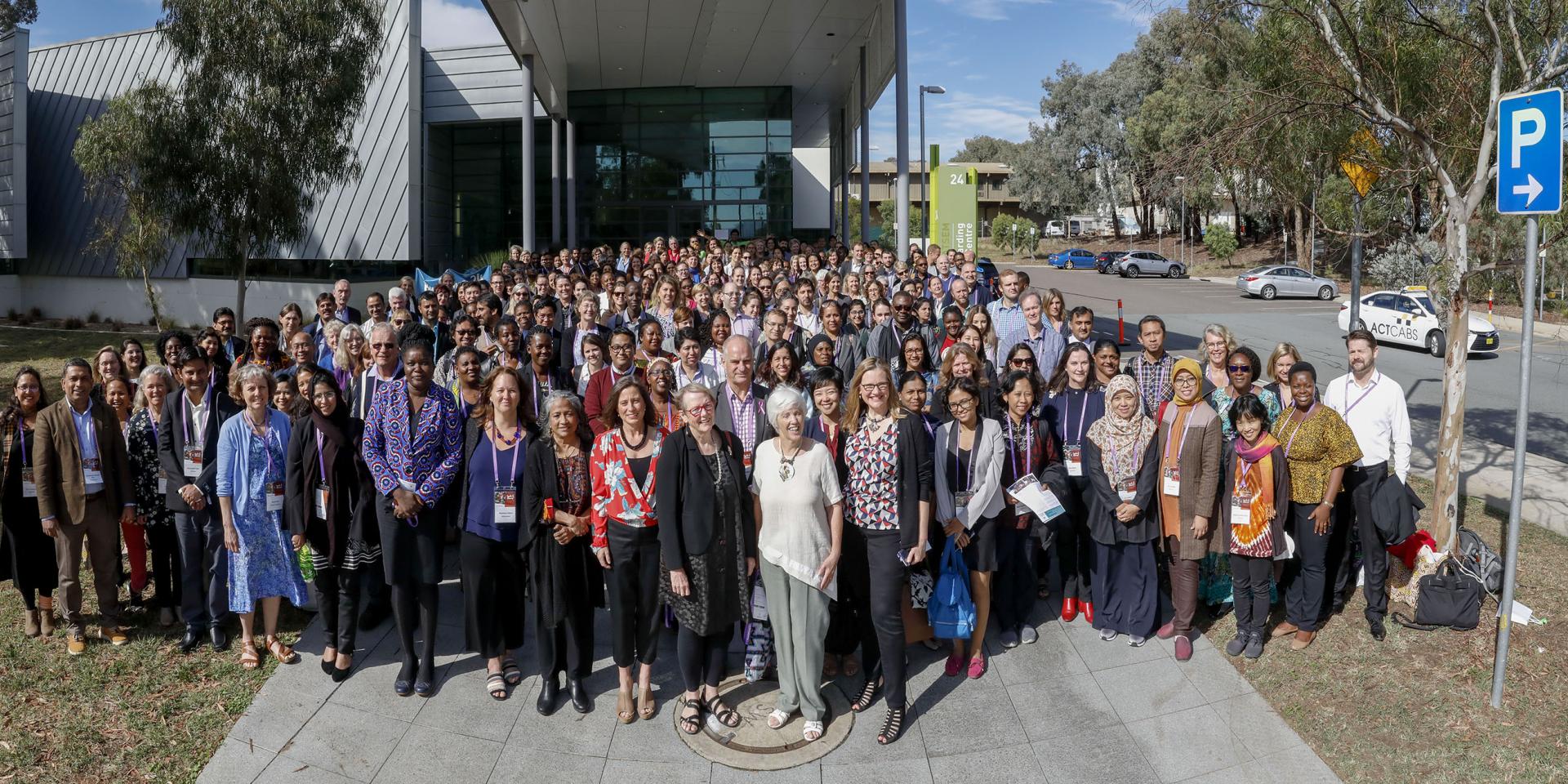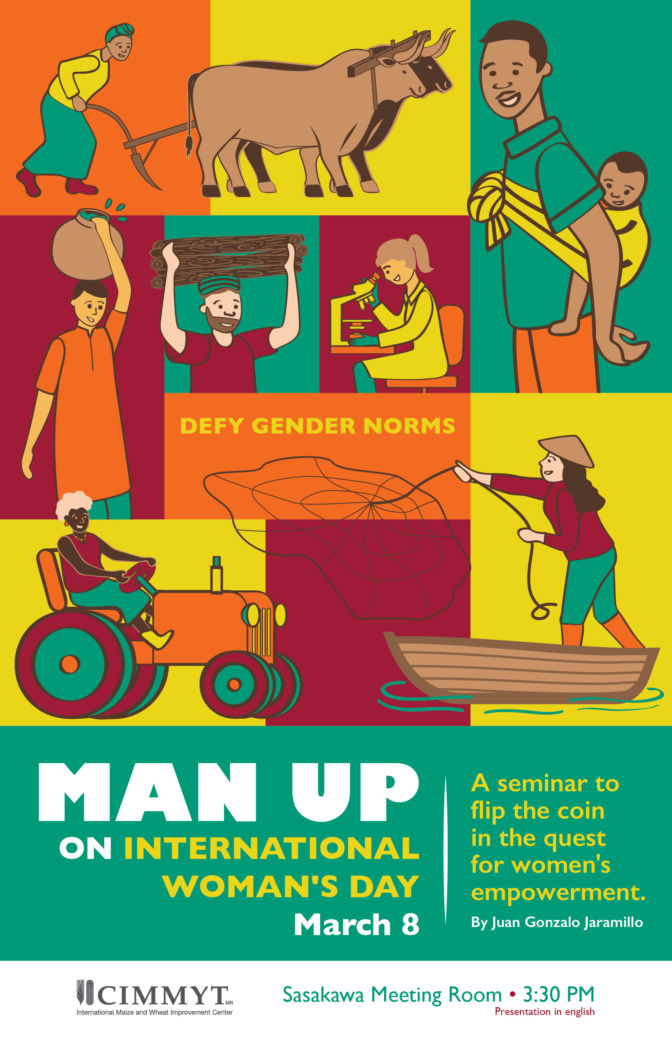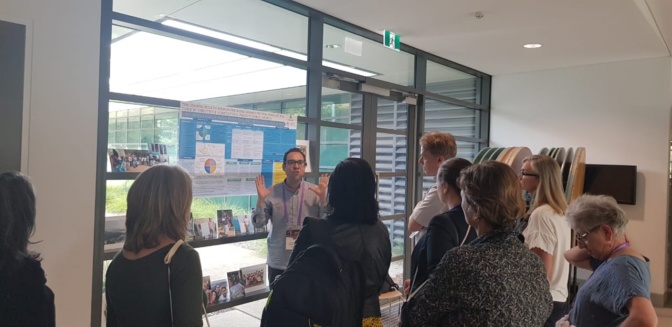Seeds of Change harvest: “We need to work with BOTH women and men” – Juan Gonzalo Jaramillo (formerly CIMMYT)
 Photo: Patrick Cape/ACIAR.
Photo: Patrick Cape/ACIAR.
During the Seeds of Change conference, we approached several people from the ‘Gender in Agriculture’ crowd to interview them on their work, on their insights about the conference and their outlook on the next frontiers of our field of research. Find an overview of all conference related outputs here.
In this interview, we feature Juan Gonzalo Jaramillo Mejia, currently a staff at the World Food Program and at the time of the interview still a Project Manager and Researcher on Inclusion, Innovation and Social Protection at the International Maize and Wheat Improvement Center (CIMMYT). Juan Gonzalo is passionate about masculinities and uncovers here his personal journey around it, along with other reflections about the field of ‘gender in agriculture’.
When did interest in gender and development become a passion?
The turning point in my career was working for the Grameen Bank in Bangladesh. The experience was as if the Newton’s apple had hit me! I realized that by giving money and resources to women who didn’t otherwise have access to credit, the Bank was not only addressing the material causes of poverty but also the intangible, normative, causes too. They had realized that gender inequalities were not just a cause but also an exacerbating factor of poverty, risk and vulnerability. In sum, the exposure to these grave realities, the interaction with women in some of the most remote rural villages in South-East Asia turned me into a feminist.
This is how I realized that my life was in international development. I initially embarked with the Food and Agriculture Organization (FAO), where I worked on identifying, analyzing and envisaging ways to increase the gender sensitivity of agro-rural development policies. Furthermore, I co-authored with my colleague Maja Gavrilovic three technical guides on gender-sensitive social protection programming. In doing this research, we realized that by not applying a relational lens and focusing on women only, some social protection programs were exacerbating gender inequalities and paradoxically, doing harm to women by excluding and leaving men behind.
I decided then that I wanted to delve deeper into the role of men and masculinities in poverty reduction.
Can you describe your current work in gender?
At the CGIAR’s International Maize and Wheat Improvement Center (CIMMYT), I have reconfirmed that we tend to put the responsibility of achieving gender equality on the shoulders of women ONLY.
But my take is that if we really want change things strategically in the long-run we need to work with BOTH women and men.
Men are often the gatekeepers in the way of achieving that equality and thus we should and need to work with men. Not against these men: there are a lot of them that are already allies and partners of women, supporters of gender equality at scale. These men see a compatibility of incentives or in other words a beneficial alignment of their interests, needs and own experiences of violence and exclusion with the very principles that feminism as a movement has promoted. We cannot fail to recognize men as gendered beings and that they already see or can see themselves reflected in the struggles of women.
However, we must recognize the challenges and limitations of working with men, what has been coined by Connell as the ‘patriarchal dividend‘. Gender equality poses a paradox to us men, as achieving it would mean to losing the benefits that the social system has for long, systematically and dis-proportionally given us. For instance, having to play now a self-sufficient role in domestic and unpaid work where traditionally we have been spoiled when labelled as a ‘women’s thing‘ to do.
Can you tell us about a widely publicized event you recently led at CIMMYT on gender?
Inspired by this line of thought, for this year’s ‘International Women’s Day’, we decided at CIMMYT with Genevieve Renard and Lone Badstue to turn the traditional event’s agenda on its head.

I developed and delivered a seminar which I titled: ‘MAN UP!’. The seminar focused on taking away from women the responsibility of achieving gender equality on their own. We looked both at the role that men currently play and should play to make it a tangible reality. We also looked at the ways in which men are also affected by gender inequalities and the benefits that they will perceive as the result of a gender-equitable society, even if they have to shoulder new tasks and responsibilities.
In sum, it was revolutionary for CIMMYT and myself too! I created a disruptive illustration for the event that showed interchanged roles, like men carrying and taking care of their baby, carrying water and wood on their heads… In contrast, women were portrayed as scientists, fishers and maneuvering a plough and a tractor.
It was important for me to pose a challenge to my colleagues in general, my male counterparts in particular and to the Institution: We need to understand the gender norms that rule our life and interactions and the active or passive roles we are playing to disrupt the system and the unfair state of things. The seminar was one of the most attended seminars ever at CIMMYT with 120+ people including program managers and directors.
In the aftermath of the seminar, various program directors came to see me and said, “we need to do something for the organization” and lead by example. Now there is interest to identify, embrace and confront our own biases for a more inclusive way of working at CIMMYT. Hopefully, that will be the topic of my next talk and where new efforts will be channeled by the organization to more broadly articulate the ground-breaking work it has developed on gender.
In fact, after the Seeds of Change Conference in Australia, I was invited to deliver the ‘MAN UP!‘ talk about the role of men and masculinities in agro-rural development initiatives at the Santiago de Chile FAO office. We hope this and other CGIAR research ventures will continue to open up debates and help to influence the perspective of our counterparts on gender beyond the United Nations System.
What was exciting and/or challenging about the Seeds of Change conference, its contents and the fact that for the first time the CGIAR community was also mixing up with the wider ‘GenderInAg’ community?
I really found exciting that there were specific sessions devoted to the topic of men and masculinities. Two years ago, I presented the research I had advanced at the London School of Economics (LSE) on masculinities at the annual conference in Amsterdam and it was fresh, it didn’t exist otherwise. It is important we note this evolution and continue to explore different approaches from the more typical agendas CGIAR and other research organizations have advanced.
The other thing is that the CGIAR is really embracing SDG 17 on partnership building. Through these key engagement platforms, we are not only cross-fertilizing our ideas and projects but we are are also linking CG research with other development cooperation agencies such as the Australian Centre for International Agricultural Research (ACIAR). More work needs to be done to bring more actors on board, which may be reluctant to devote their research efforts on gender issues, but for now, it’s great that we are able to bring more and more people to the discussion and position this yearly event as an unmissable commitment.

What have been your highlights from the ‘Seeds of Change‘ conference and what has inspired you to try back in your work?
I really enjoyed the Gender Transformative Approaches (GTAs) discussion. It was about changing the prevailing normative and power structures that prevent people from enjoying a gender equitable society. Having that discussion from the onset has been extremely refreshing and important.
What do you see as one of the ‘next frontiers’ of gender in agriculture research in the next few years?
Intersectionality. I think we should be further exploring this approach in the future using gender as key entry point (however not the only one) and articulating other elements. We need to embrace other identity markers that are aggravating the possibilities of rural people to harness the potential of agricultural and rural development such as race, ethnicity, ability, social class, caste, and citizenship status, and see how gender interacts with them.
Even if we work on gender we are not per se addressing other markers and pervasive social norms that are (potentially) limiting our impact.
Gender as a field should therefore fully embrace the complexities resulting from the simultaneous interaction of other social markers that by defining positions of privilege and disadvantage in society, offset or aggravate the inequalities it has aimed to address.
‘Femininities’. The topic of masculinities has really taken our attention but by focusing too much on them we may be making the same old mistakes that have paradoxically brought us to explore them more deeply… Gender is a relational concept and therefore, we need to examine how the constant configuration and re-configuration of the masculine is linked with the definition of femininities in a given time and place. To this point, the work in this field is scant and needs proper thinking.